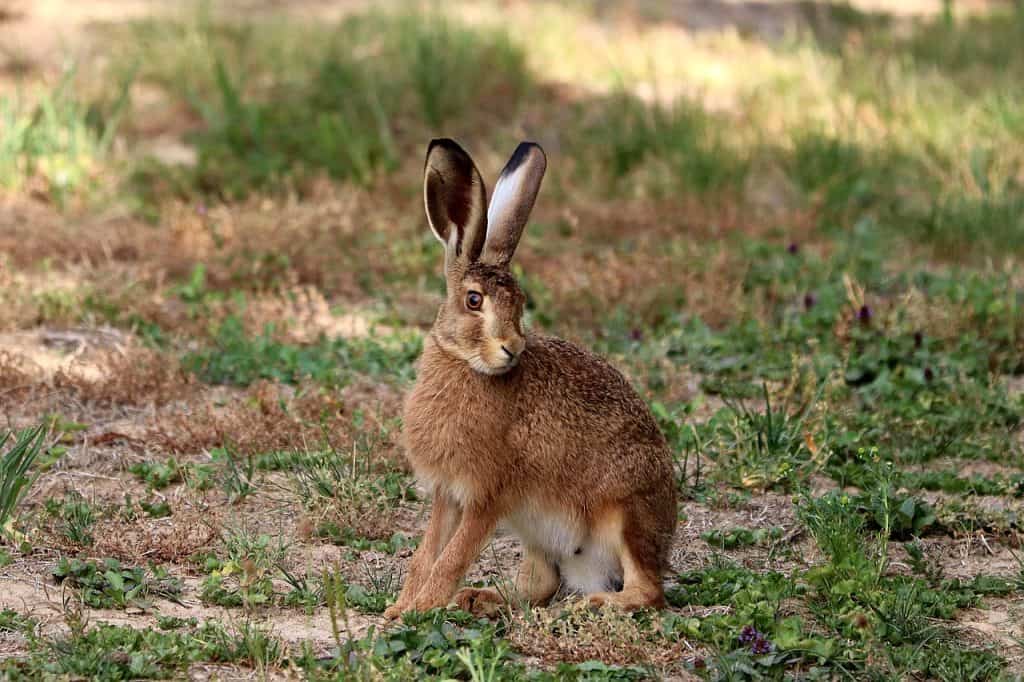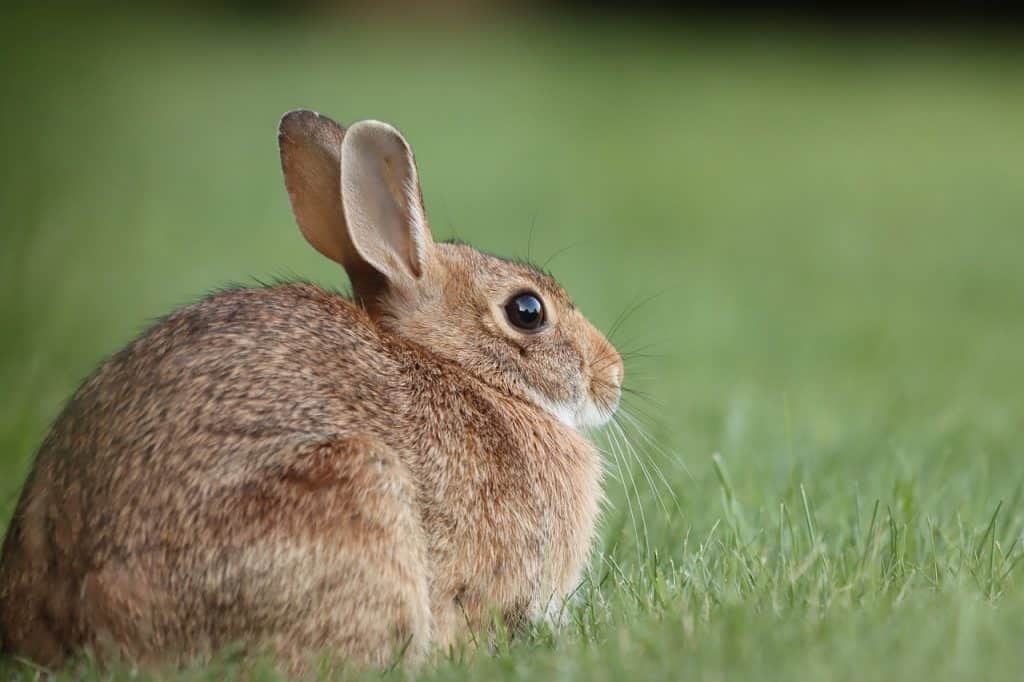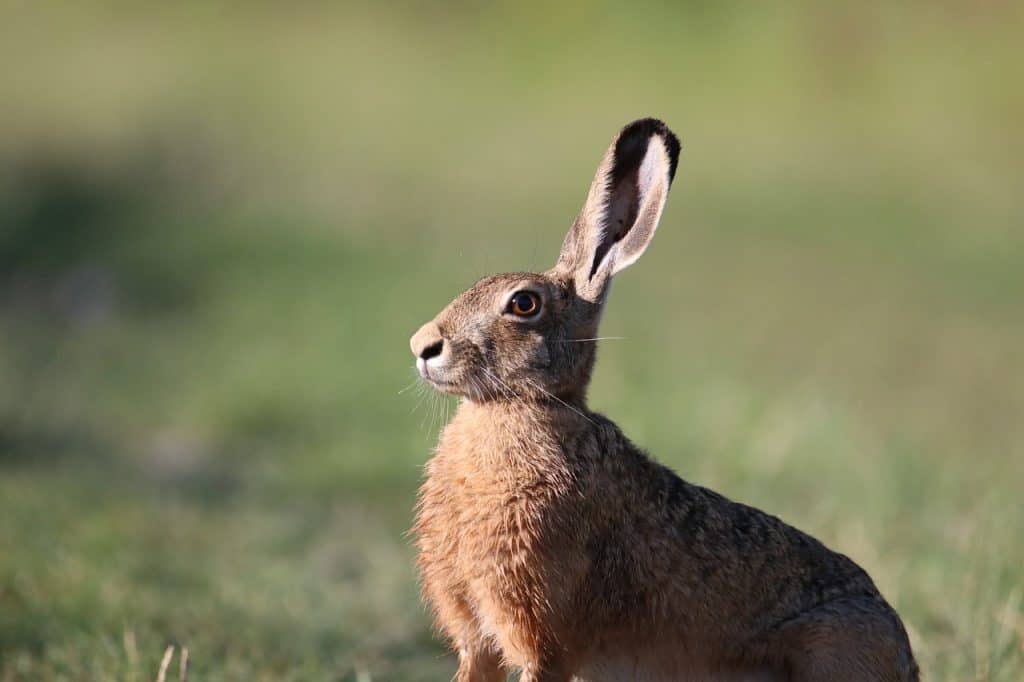
Most people don’t know much about wild rabbits. Even if they do, it might be because someone is talking about hunting them for sport. This list includes seven wild rabbit breeds that are found all over the globe. Some are plentiful, others are in danger of extinction.
1. Colombian Pygmy Rabbit
The decline in native Washington rabbits is due to wildfire, disease, predation, and habitat loss over 160 years. Although some programs have been successful in reviving the Pygmy Rabbit, they are still endangered. The adorable little rabbits are 9 to 11 inches in length and weigh less than one pound. Their grayish-brown coats are soft and fluffy and they are also very soft to the touch. They are timid and skittish, so they will not be far from their burrows. Because they are wild and endangered, the Colombian Pygmy Rabbit is not recommended for pet owners.
2. Cottontail Rabbit

Cottontails can be found in North, Central, and South America. There are many sub-species. Their stubby whitetails, which are visible when they hop away from you, are what gives them their name. Because they are highly reproductive, the Eastern Cottontail is most common. This can make it difficult for farmers. The hare and the pygmy rabbit are closely related to cottontails. They can vary in size and weight depending on where they live, but their color is usually grayish-brown. They can easily become stressed and are highly strung. They are not able to thrive in captivity because of this.
3. European Rabbit

The European Rabbit is a native of southwestern Europe and northwest Africa. Because it causes many environmental problems, many countries consider rabbits to be an invasive species. They were present in the Middle Pleistocene period (0.5 million years ago). Six sub-species exist of the European Rabbit. Their size and weight depend on their habitat. They are usually greyish-brown, but they can also be colored differently. All domesticated rabbits are descendants of European rabbits.
4. Amami Rabbit
The Japanese native rabbit, the Okinawa-based sai is found on two small islands near Okinawa. These rabbits are the descendants of old Asian rabbits and prefer mature forests. They have smaller ears than other rabbits, shorter hind legs and feet, and bulky bodies with large, curving claws that can be used for digging. Their fur is thick and wooly, and they are a reddish-brown color. Predators and habitat destruction are threatening the existence of this nocturnal rabbit. To save this rabbit’s existence, there are several groups.
5. Sumatran Striped Rabbit
The Sumatran Striped Rabbit can be found in Indonesia’s Barisan Mountains. Due to habitat loss, they are considered a threatened species. There is very little information about them. Their population is unknown and they are not known by many people. They can grow up to 1.5 feet long and are medium-sized. Their ears are small and round, and their bodies are black and have brown stripes. They also have a red tail or rump. Sumatrans are nocturnal and live in burrows other animals have built.
6. Riverine Rabbit
This rabbit is a native of Africa and lives near seasonal rivers. It is one of the most endangered mammals on the planet. Their decline can be attributed to a decrease in plants and other vegetation they eat. They have a brown belly with a gray belly and longer ears and bodies than other rabbit breeds. Riverine is a nocturnal and solitary rabbit that lives in burrows. It provides many benefits for local farmers. Many organizations are diligently working to save this wild rabbit.
7. Volcano Rabbit
This tiny rabbit lives in Mexico’s mountains and is the second-smallest in the world. A mature adult rabbit will not exceed 1.3 pounds and can live for seven to nine years. This is an unusually long lifespan for wild rabbits. Their bodies are short and their legs are narrow. They have small ears and thick greyish fur. They are most active at night and live in burrows. They are now endangered because of habitat loss and changes in climate and vegetation. Many people don’t know they are protected and continue to hunt rabbits illegally.
8. Annamite Striped Rabbit
Although closely related to the Sumatran Striped Rabbit Nesolagus Timminsi genetic testing has revealed that it is a distinct species. Although it looks very similar to the Sumatran Striped Rabbit, its striping pattern may be slightly different. This new rabbit is found in Vietnam and Laos. The population numbers are not known.
Conclusion
Wild rabbits are an exceptional group that should be given attention by the rabbit community as many of them are at risk of extinction. It is important to know about wild species as many domestic rabbits are descended from them.
What rabbit breed resembles a wild rabbit?
Cottontail rabbits are the most common kind of wild rabbit. However, there are 14 rabbit breeds present in the United States, none of which are domesticated. All pet rabbit breeds are European in origin. Examine the rabbit’s size, form, and, most importantly, behavior.
Do wild rabbits transmit disease?
Rabbits kept outside, caught from wild populations, or purchased from a pet store may be carriers of zoonotic illnesses. Pasteurellosis, ringworm, mycobacteriosis, cryptosporidiosis, and external parasites are all zoonotic illnesses connected with rabbits.
Is it possible to tame a wild rabbit?
Unfortunately, neither a newborn nor an adult wild rabbit can be tamed. Their wild instincts are so deeply embedded in them that they can never truly feel at ease living among humans.
Is it possible to rear a wild rabbit?
Surprisingly, raising wild rabbits is similar to growing domestic rabbits. Keep them in the home until they are around 4 weeks old to keep them warm. Place them in a 2-square-foot cardboard box with very high walls. Put some hay in it for them to hide behind or on top of.
Do untamed rabbits bite?
Wild rabbit bites are uncommon since they normally do not bite until they are totally trapped. If you are bitten by a wild rabbit, get medical attention. Wild rabbits do not normally transmit any significant diseases, however, they can carry rabies or cause a bacterial infection.
Are wild rabbits intelligent?
Rabbits are quite clever. Some breeds are even more trainable than others. You may train them to recognize their names and come to you when called, for example. Rabbits also have an excellent memory: they do not quickly forget unfavorable events or feelings.
How can you form a friendship with a stray rabbit?
When you’re attempting to encourage the rabbit to trust you, leave a trail of delectable food that the rabbit will follow. Arugula, dandelion leaves, and carrot slices are examples of leafy greens. This will make it trust you and eventually tame it. Talk to it softly.
What kind of rabbit is the most prevalent in the wild?
The eastern cottontail (Sylvilagus floridanus) is a New World cottontail rabbit in the Leporidae family. It is the most common species of rabbit in North America.